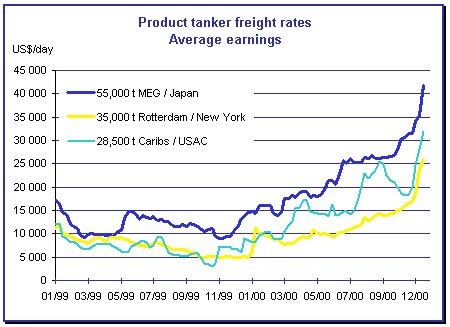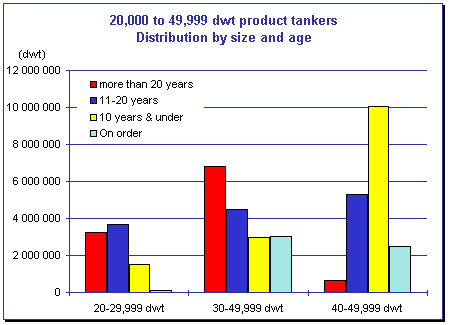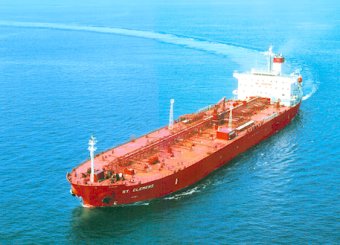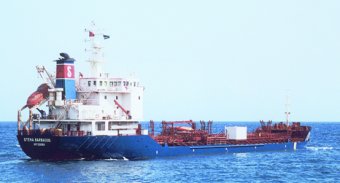
The transport of Refined oil products
in 2000
|
|
|
|
|
|
Even though it was reasonable to think that by the
end of 1999 the market had reached the bottom, nobody could have
imagined that within the space of a year that product tankers, across
the board, would triple their average daily returns.
Certainly the 'Erika' affair had a direct and
decisive impact on the demand of product tankers especially in the
Atlantic zone, as it brought about the disqualification of the older
vessels (35 % of vessels of 30,000 dwt are more than 20 years old). But
it was not just this "affair" which alone can explain the
repercussions on ships quite different both in size and quality from the
'Erika', and operating in areas where pollution problems are much
less sensitive than in the Atlantic.
In fact the strong recovery of the Asian economies,
the American growth which was stronger than predicted, and the good
performance of Europe caused an unexpected rise in transport demand.
Concerning refined products, the policy of tight inventories helped to
magnify the imbalances and hence exaggerate the upward trend.
In 2000 the freight market for product tankers
reached record levels in a period outside a major political crisis.

|
| Handysize (Handy product tankers) from 25,000 to 40,000 dwt
|

|
| Ships in the same
size category as the 'Erika' were the first to start the hike in
freight rates. The immediate "political" consequences of the
accident were to make charterers of dirty products - traditionally of
little value and thus transported by cheap, old ships- to scramble for
any vessel with a double hull. The price rise was continuous from March
to July, helped by an active fuel market, at a time when charterers of
clean products were also finding it difficult to secure modern tonnage.
The returns on ships of this size which
were stagnating around $8,000/day from January to March, jumped to
$15,500/day by mid-April, then $23,000/day in August to break through
$25,000/day today.>

|
| Medium range (MR product tankers) from 40,000 to 50,000 dwt
|

|
|
With the majority built after 1985, generally with a
double bottom if not a double hull, ships in this category benefited
from the strong demand in the American and Far East markets, and also
were sought after for movements of jet from the Middle East to Europe.
Consequently not only was there higher tonnage transported than in 1999
but above all the routes were longer ; UK / USA (23 days round trip),
Singapore / West Coast US (50 days round trip), Middle East Gulf / UK
(42 days round trip).
This aspect of longer voyages came on top of the
pressing demand for modern vessels in local markets: Singapore, Japan,
Korea, Mediterranean, North Europe, Caribbean, and the US. The result of
the heavy use of these ships on relatively long voyages produced a
highly nervous "inter-zone" market and at times it was
difficult to find available tonnage. Consequently the average daily
returns on ships of this size went from $10,000/day to $25,000/day in
less than a year.

|
ST. CLEMENS
47,131 dwt, blt 2000 by Onomichi - Owned by Maruta |
|
| Long range (LR product tankers) of 55,000 to 100,000 dwt
|

|
|
Dedicated to inter-zone voyages, ships in this
category have a similar profile to those in the medium range, namely a
relatively modern fleet, and where the 'Erika' consequences were
less apparent. On the other hand, they took full advantage of the Asian
economic recovery and of the strong showing on the American market. In
addition the diverse demand coming from various Japanese, Korean, or
Indian charterers gave rise to owners creating "pools" (Torm
Waterfront or AP Moller).
"LR2" vessels with a 95,000 to 120,000
cubic metres capacity were principally used on voyages out of the Middle
East Gulf towards the Far East. Nonetheless at year's end, they also
were employed on delivering gas oil lots of 80-85,000 mt to Europe and
Brazil. They also had the knock-on benefits of the strong performance of
the Aframax crude oil tankers.
"LR1" vessels (80,000 / 95,000 cubic metres
capacity) were employed, as were the 40,000 / 45,000 dwt vessels, on
voyages from the Middle East Gulf to Europe or the US, North West Europe
to the US, or Far East to US West Coast.
The scarcity of ships forced charterers to cover in
advance and to ask for wide discharge options, which made it hard to
read the market and played into the hands of the supply
"pools". The daily earnings of "LR1's" shot up
from $15,000/day in January to reach $ 40,000/day in December.
|
| Outlook
|

|
|
The rosy prospects for 2001 should not hide a
somewhant fragile market.
The fact that the supply of tonnage is limited over
the next three years suggests that freight levels should remain firm.
While the average lifespan of product tankers
traditionally has been 23 years, the effect of the 'Erika' will
almost certainly reduce the use of vessels over 20 years, thereby making
nearly a third of the existing fleet obsolete. At the same time, ships
which are on order, break down as follows :

Already it is practically impossible to place an
order for delivery before 2003. In such conditions owners of modern
tonnage can remain optimistic provided that demand does not tail off.
Charterers after trying to resist for as long as
possible the harsh hike in levels sought by owners, are now biting the
bullet and committing to time-charter periods of more than a year, at
daily rates of over $18,000 for ships of 45,000 dwt and approaching
$16,000 for those of 35,000 dwt.
Notwithstanding, the strong increases in freight
rates at the end of the year leave one to question whether a technical
correction might not occur.
Rates have accelerated tremendously as from November
2000. Levels which were already high, went up an average 33 % in one
month, making trading difficult.
Conditions have reached such a state that traders
refuse to commit to business, especially as the wide range of discharge
options on previous voyages and the risks of bad weather make for
delayed loadings. In addition, the freight costs are eating too much
into the already slim refinery margins. And on top, the new base rates
in Worldscale have been increased by 18 % as from January 1st 2001.
Therefore there is a serious chance of a drop in
January / February, and as the preceding rise has been so strong the
correction could be equally harsh.
However without doubt the biggest concern is the view
given by economists for 2001 which forecast a growth in the American GDP
of 3.4 % as against 5.1 % for 2000. It is therefore likely that the
strength of American demand will diminish and that the tonnage
transported to US destination will decline in 2001. This is however a
fundamental factor in the market, as the low gas oil inventories in the
US and Europe have been one of the key elements in contributing to the
high rates.
The most probable scenario is a drop in crude oil
prices during the first half of 2001, followed by a drop in product
prices starting in the spring, given that US gasoline stocks are already
higher than this time last year.
It is highly unlikely that spot freight rates will be
able to stay at the giddy levels reached at the end of 2000. Nonetheless
one can expect the market to remain volatile and generally favourable to
owners.
|
| The product tankers second-hand market
|

|
|
In the course of 2000, about 67 vessels have been
sold with a deadweight ranging from 20,000 to 57,000 tonnes. Out of
these, we found 42 Handysize units and 25 Medium Range ships. Seventeen
sales applied to vessels built in the seventies, 24 were assembled in
the eighties and 26 constructed from 1990 onwards. The latter category
includes two very promptly deliverable resales and two refinancing
deals.
It is obvious that the 'Erika' effect has been
very much felt throughout the year. Some owners have been willing to get
rid of their oldest units, whereas a number of buyers wanted to acquire
modern units which were not easy to find.
The nice returns prevailing on the charter market
explained that we did not observe a bigger number of modern units being
disposed of. Indeed, it was not due to the lack of potential buyers, but
to a buoyant tanker market which led owners to re-consider a sale when
they can reap nice returns by trading the vessels themselves.
Hence, overjoyed operators of attractive modern units
preferred to keep their ships as they were quite optimistic on future
developments of the product tanker charter market.
Buyers really had to be persuasive and pay up to try
to convince owners to sell.
This has been illustrated by the resale to US based
buyers OMI of two 47,500 dwt product tankers under construction at
Onomichi. Their prompt delivery position (October and November 2000)
enabled their Far Eastern owners Pacific Carriers to obtain a firm price
in the region of US$ 30.5 m each.
We can also underline the deal which has been struck
by Bergen-based Norwegian owners Tom Steckmest on the six 1993 and 1994
Halla-built units, until then under the wing of Paul Slater's
"First International". Buyers bought them by acquiring a
majority of the shares in the owning company and at time of writing
there were still some pending subjects to be declared.
More than ever before, there has been a substantial
increase in values of modern units (less than 10 years of age) while
older tankers obtained with difficulty some modest improvements
throughout the year.
As a generality and depending on their sizes and
specific features, values of modern second hand vessels enjoyed a 15 to
25 % increase in the course of last year.
 |
STENA BARBADOS
6,330 dwt, blt 1991 by Argos - Sold in 2000 to Wisby Tankers of Sweden with
t/c back to Concordia Maritime for serving Texaco in the Caribbean
|
|
Shipping and Shipbuilding Markets in 2000
I N D E X
|